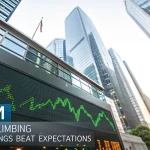The debate over Nvidia’s staying power has intensified after SoftBank said it would relinquish its stake in the chipmaker, adding a fresh test for a market leader that has defined the AI boom. The move comes as investors weigh how far the rally in AI hardware can run, and what a high-profile exit says about risk, timing, and strategy.
“Confidence in Nvidia stock is in doubt after SoftBank’s decision to relinquish its stake in the chipmaker.”
Nvidia has powered a historic surge in market value on demand for its AI accelerators, which feed data centers from Seattle to Singapore. SoftBank’s decision to step aside now raises questions: Is this simple profit-taking, a portfolio shift toward other AI bets, or a signal that growth will slow?
Why SoftBank’s exit matters
SoftBank has a long history with Nvidia and AI. It once held a large Nvidia position through the Vision Fund, later sold shares, and then spent years building and promoting Arm, the chip designer it controls. Arm’s resurgence, including a blockbuster listing, has become central to SoftBank’s plan to ride AI from a different angle—selling the architecture and licensing that power chips across the industry.
Stepping away from Nvidia now may fit a pattern: harvest gains and recycle capital into platforms SoftBank can shape more directly. The group has been vocal about AI as the next growth engine. Backing Arm and a range of AI startups offers exposure without relying on one stock’s trajectory.
The bull case: Demand remains intense
Supporters of Nvidia say the core story is intact. The company’s chips remain the default choice for training and running large AI models. Supply is tight. Wait times for new systems have stretched as cloud providers and enterprises race to build capacity.
Major technology companies have lifted capital spending plans into the hundreds of billions of dollars for AI data centers over the next year. Many of those budgets still point to Nvidia hardware, even as rivals push alternatives.
Key points that support the bulls:
- AI training workloads continue to grow, pushing demand for accelerators.
- Software ecosystems built around Nvidia’s CUDA remain a high hurdle for competitors.
- New product cycles aim to lift performance and keep customers locked in.
The bear case: Concentration, competition, and timing
Skeptics argue the market has priced in years of near-perfect execution. A single supplier dominating such a large segment can face pushback on cost and supply. If customers diversify sooner than expected—or build more in-house chips—growth could cool.
Nvidia’s revenue is heavily tied to a handful of hyperscalers. Any delay in their spending plans, or signs of AI projects not meeting returns, could hit orders. Competitors have stepped up with new accelerators, and more open software stacks are chipping at Nvidia’s moat.
What SoftBank might be signaling
SoftBank is known for aggressive bets and quick pivots. Exiting a winner can be less about doubt and more about discipline. Redeploying into Arm and early-stage AI companies could offer broader exposure to the value chain, from data center chips to edge devices.
The decision also highlights how investors are redefining “AI exposure.” Instead of owning the hero stock of the moment, some are spreading risk across chip design, memory, networking, cloud services, and model providers. That approach can smooth the cycle if a single node slows.
What to watch next
To gauge whether confidence in Nvidia is truly fading—or just resetting—investors will look for hard data rather than headlines.
- Earnings quality: Bookings, visibility on future shipments, and any commentary on order timing.
- Supply signals: Lead times for next-gen accelerators and availability of networking gear.
- Customer mix: Dependence on a few large buyers versus rising enterprise demand.
- Competition: Progress from rival chips and movement in AI software frameworks.
- Capex trends: Whether cloud providers maintain or trim AI buildouts.
The market’s balancing act
The AI build cycle has created extraordinary winners, and Nvidia sits at the center. SoftBank’s exit is a reminder that even the strongest story faces position reshuffling as investors reset risk and return targets. For some, the stock remains a core holding linked to the growth of AI. For others, diversification across the supply chain looks safer at current prices.
In the near term, price action may be choppy as the market digests a major seller stepping away. Over the longer run, the debate will hinge on whether AI demand keeps outpacing supply, and whether competing platforms can close the gap on performance and software support.
For now, the signal is clear: sentiment can swing quickly, but the test will come from orders, deliveries, and sustained spending on AI infrastructure. Watch the numbers, not the noise.







